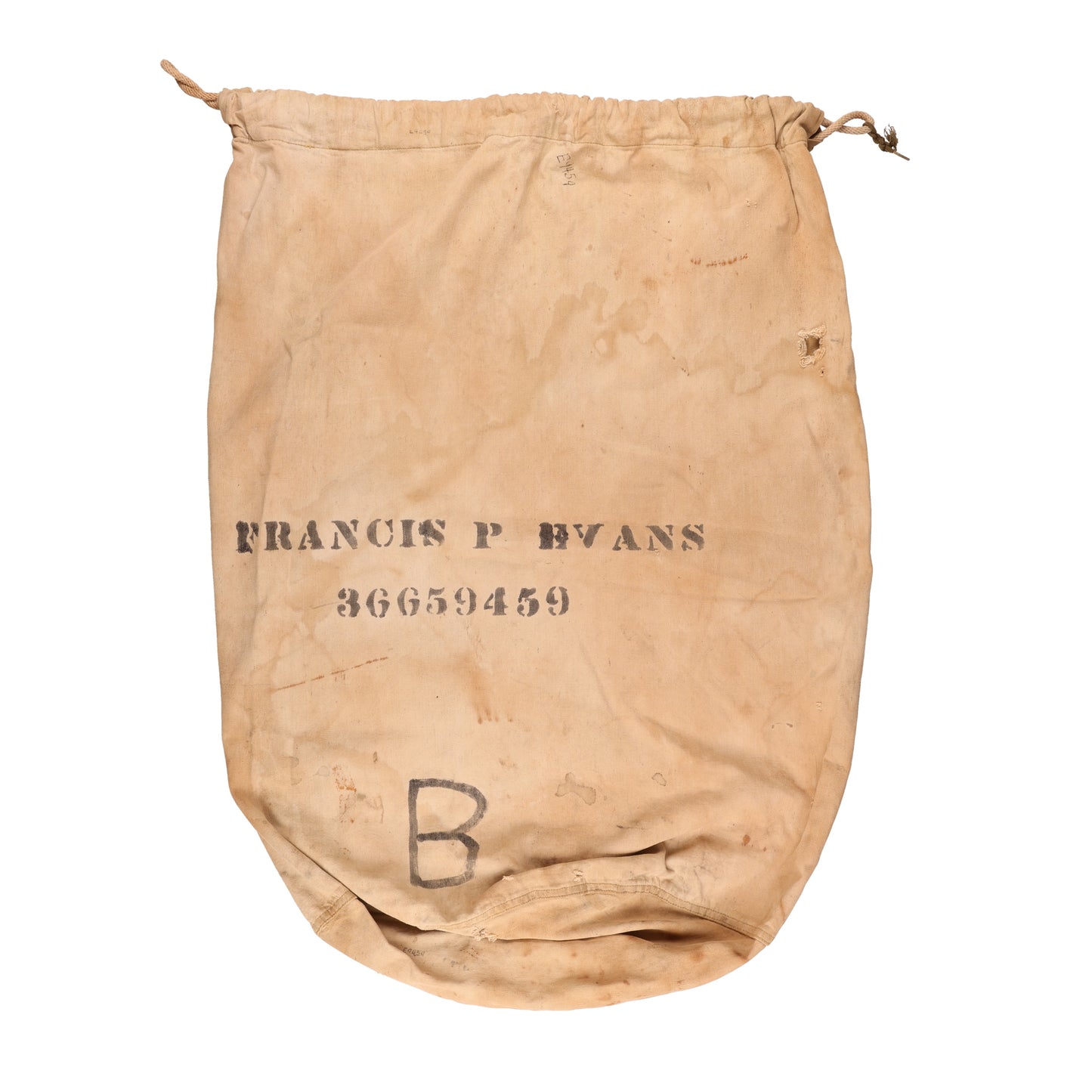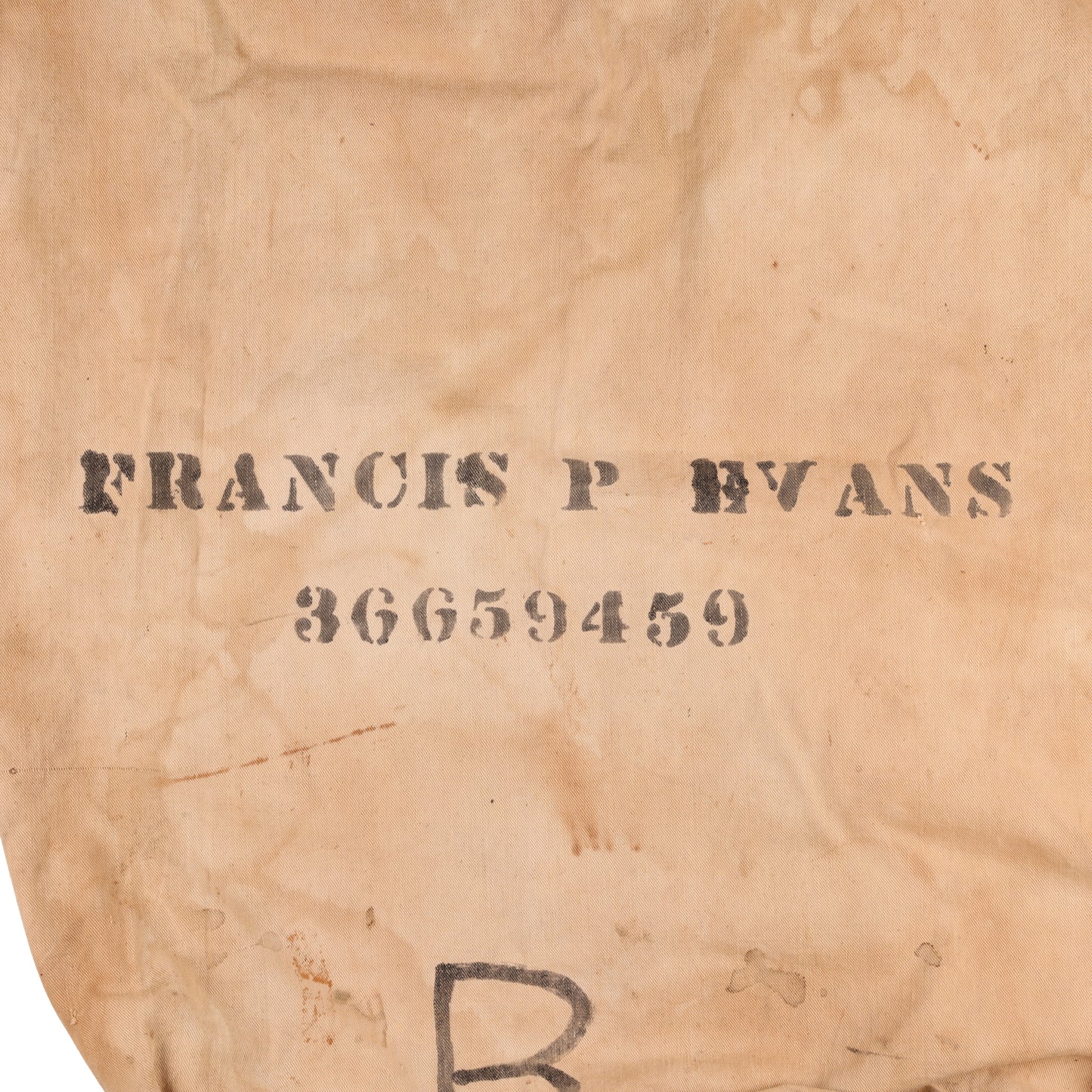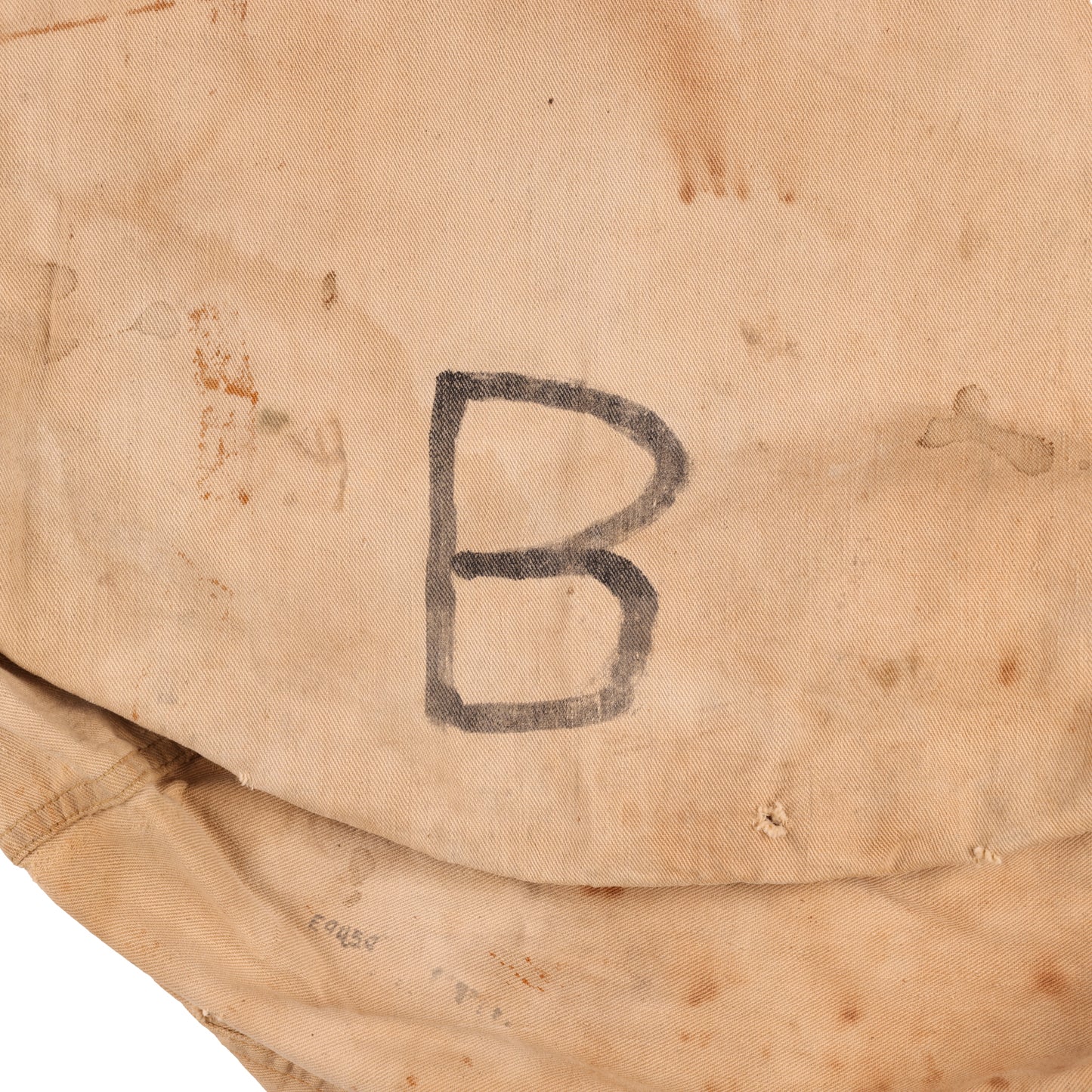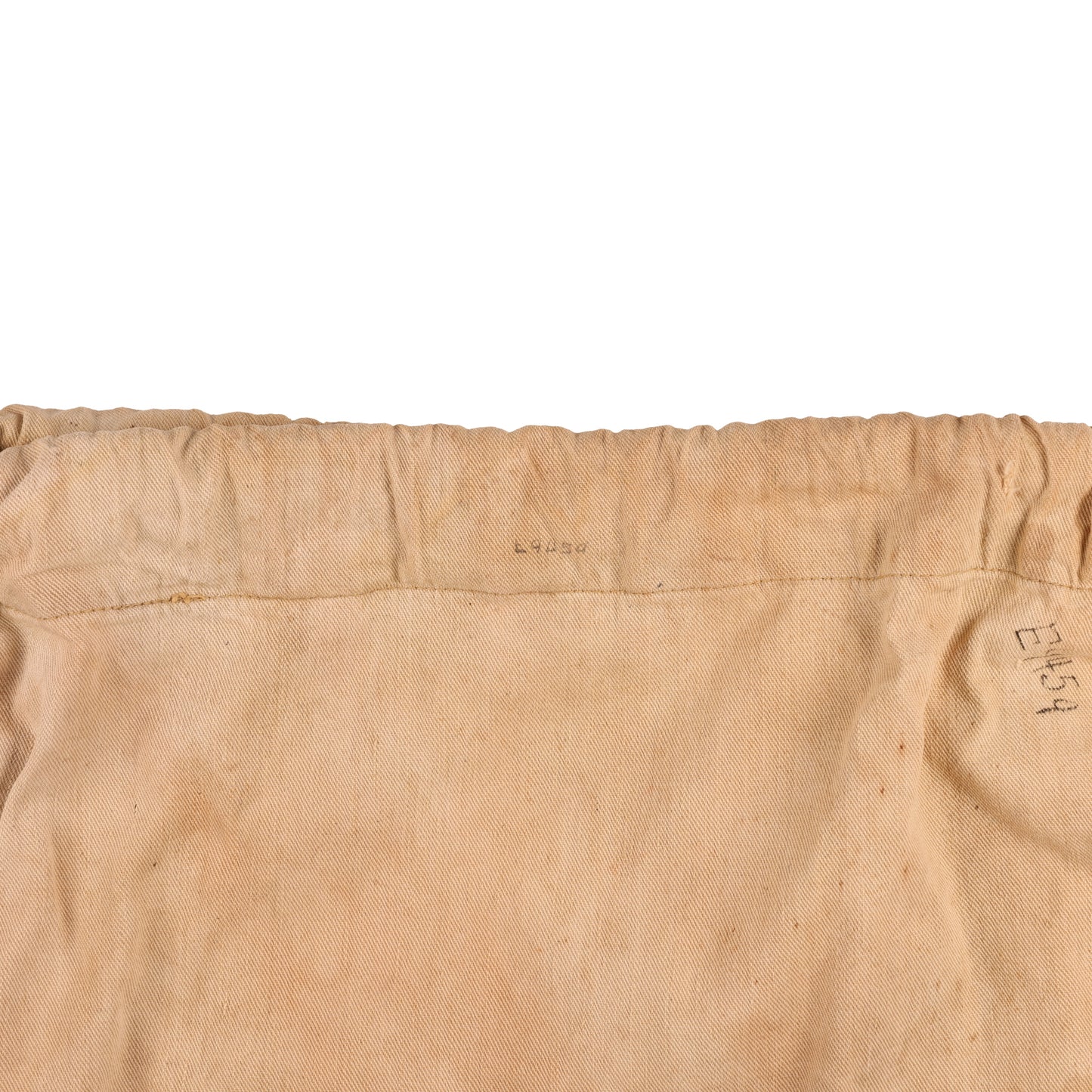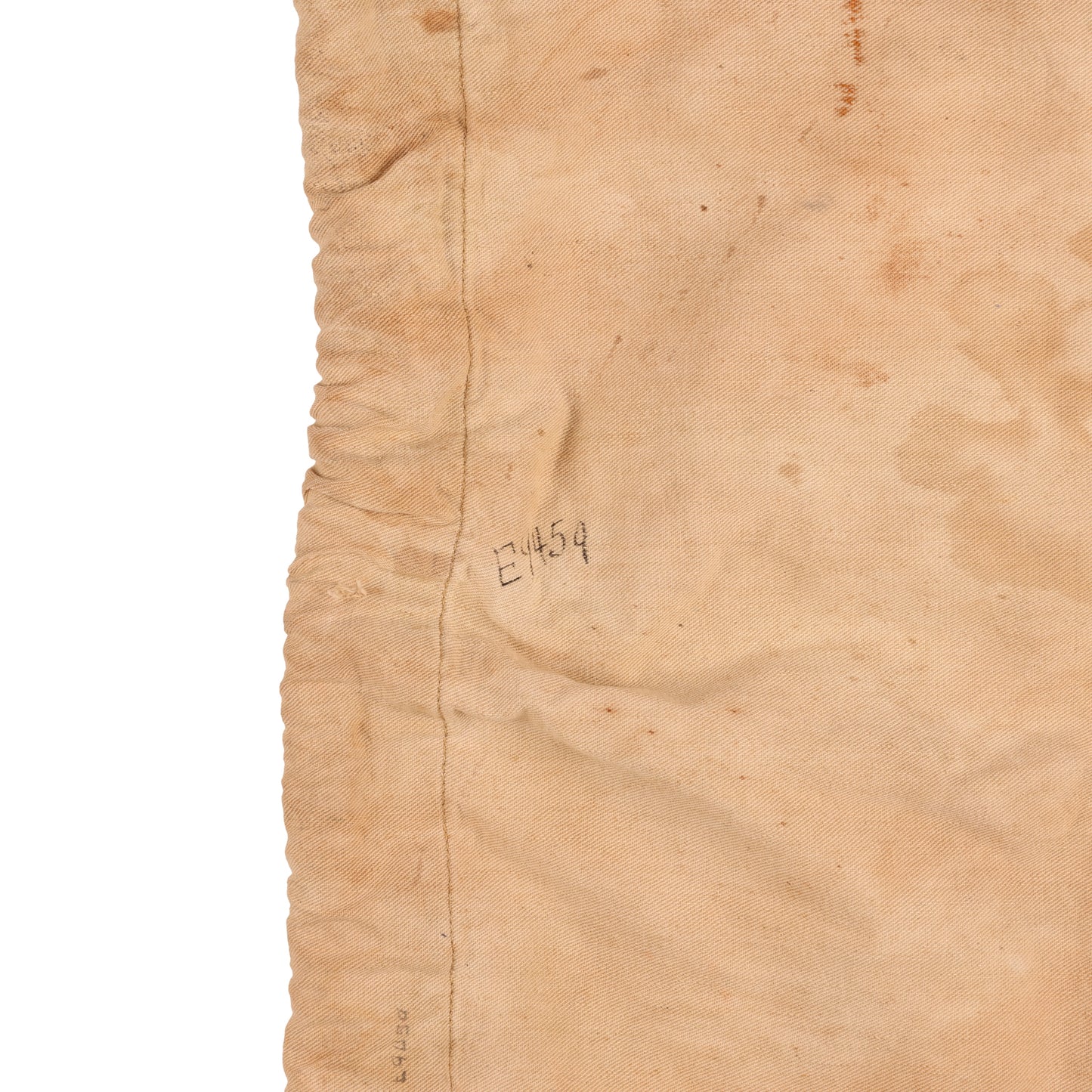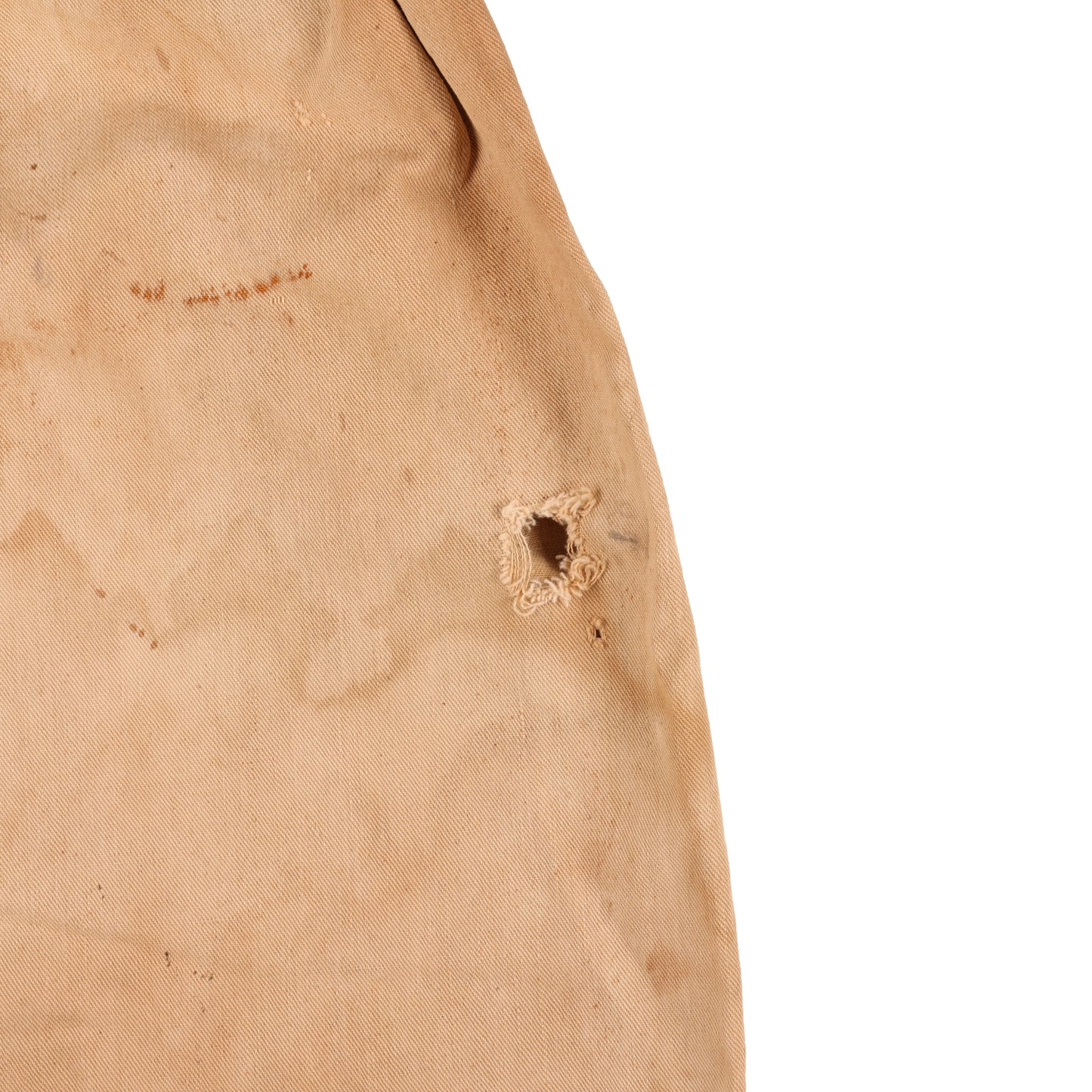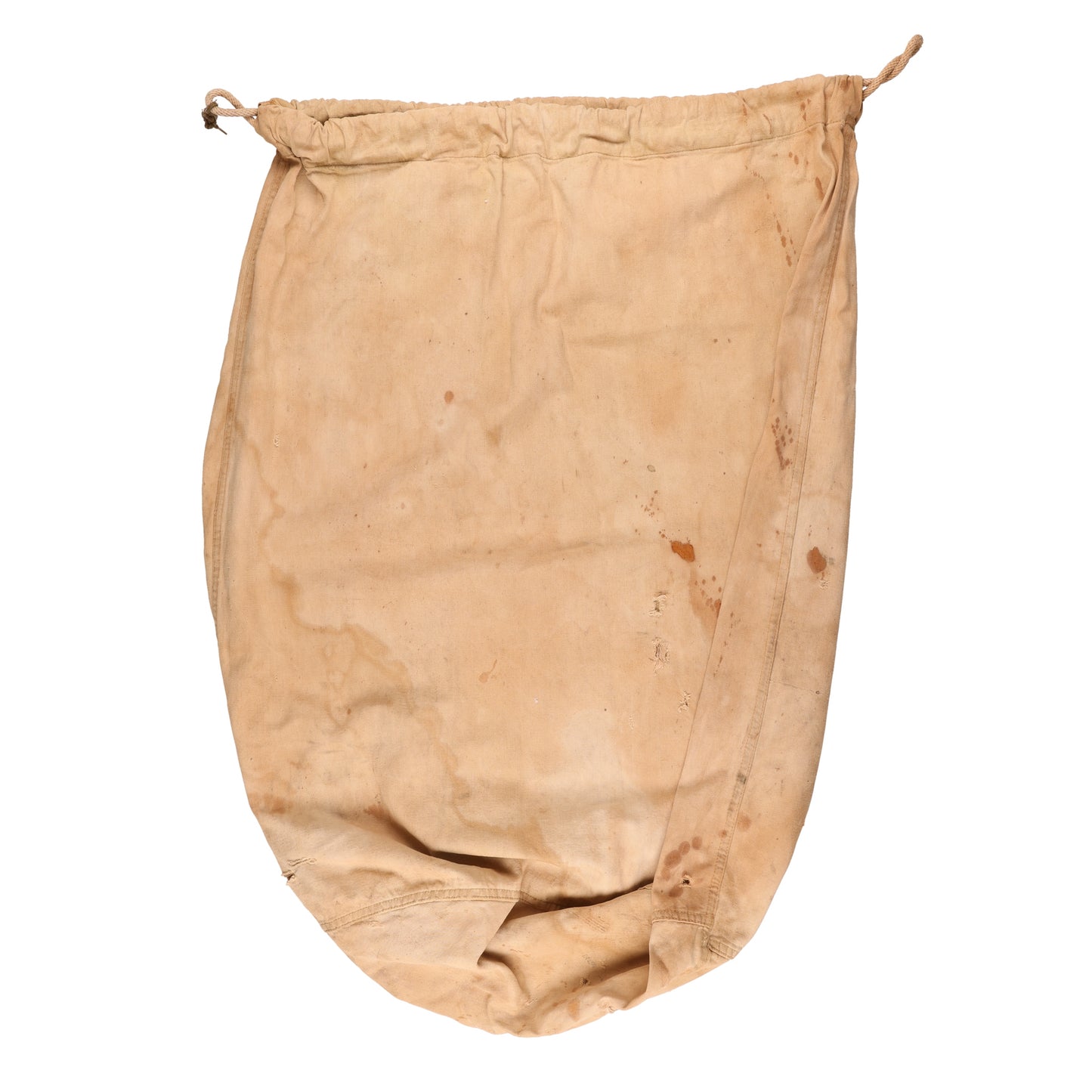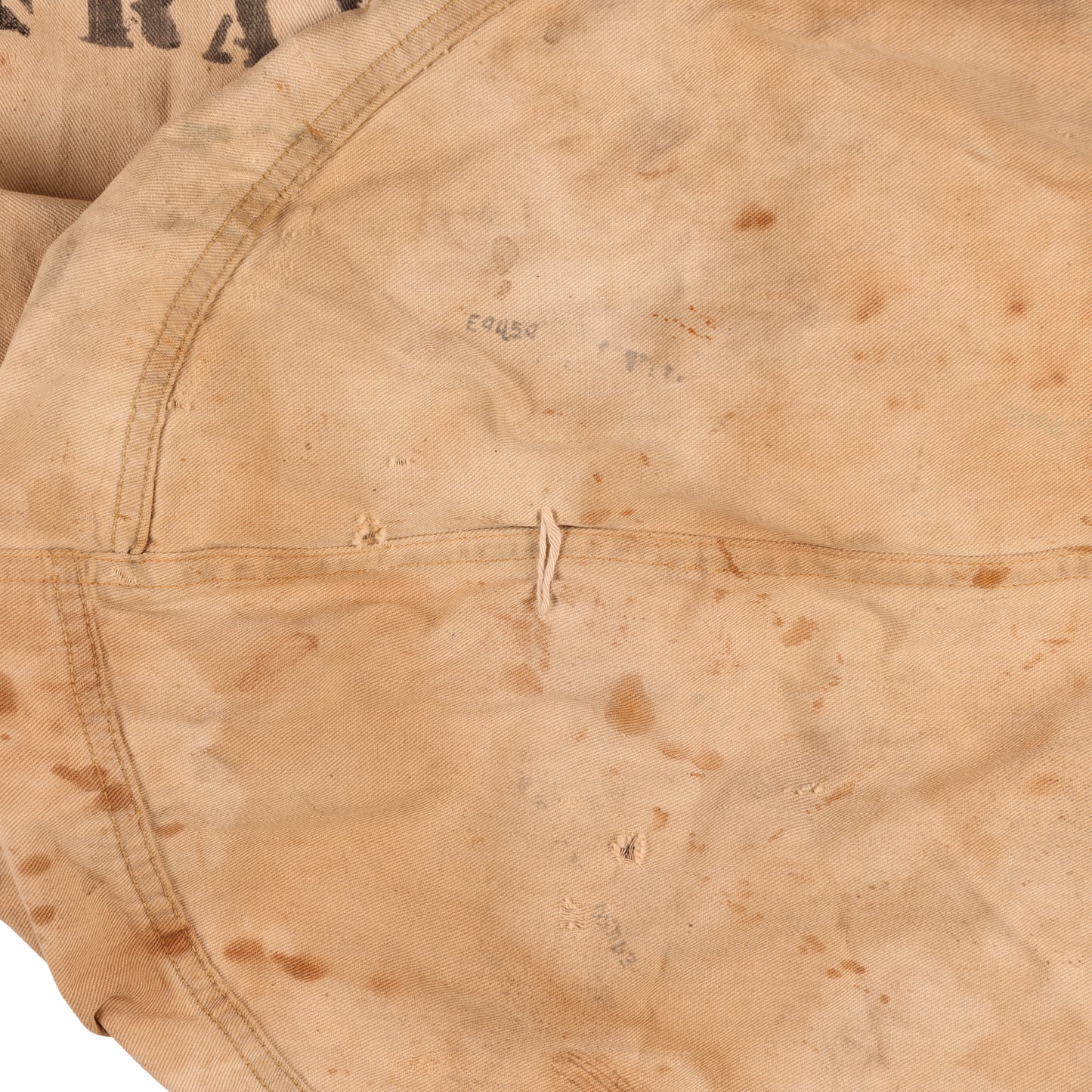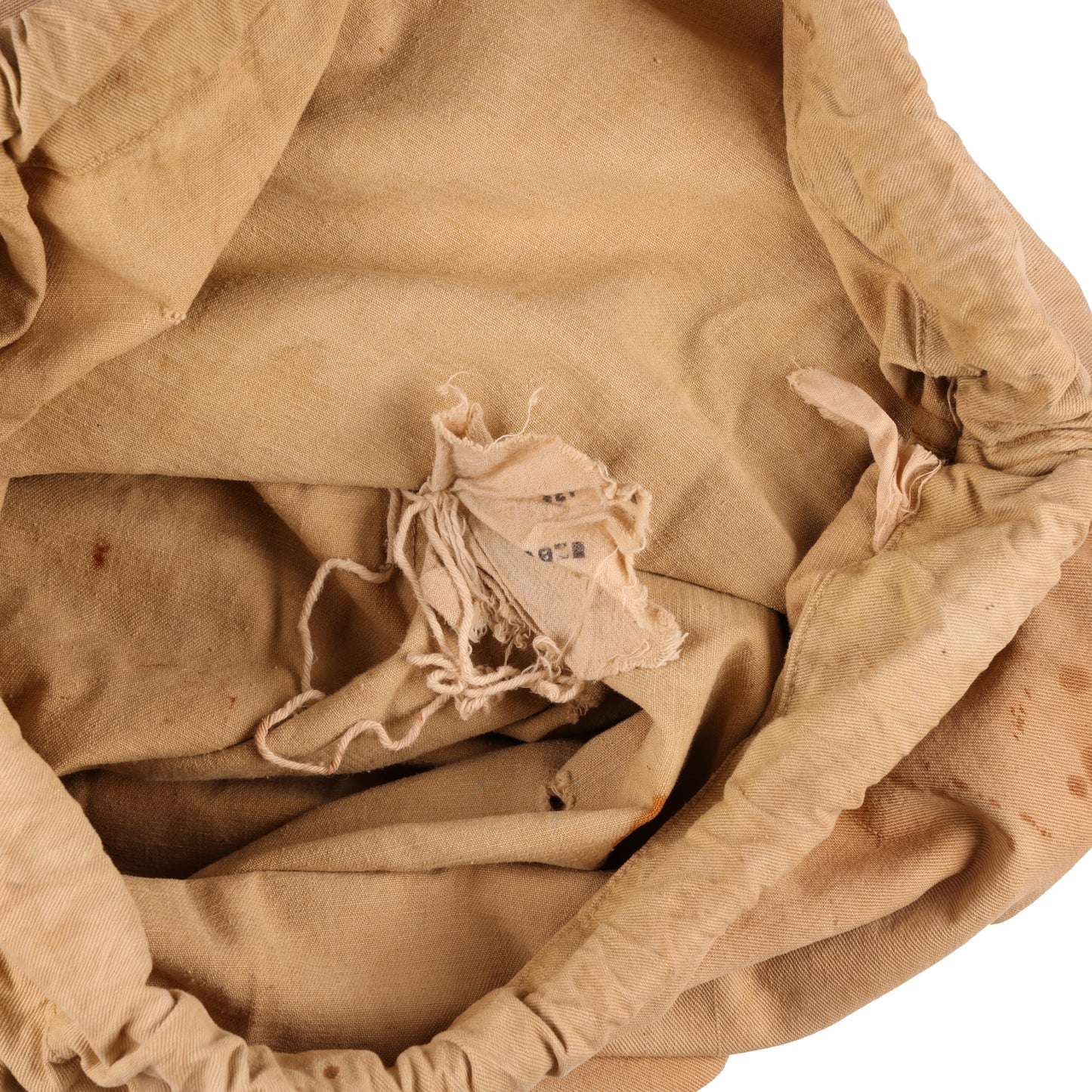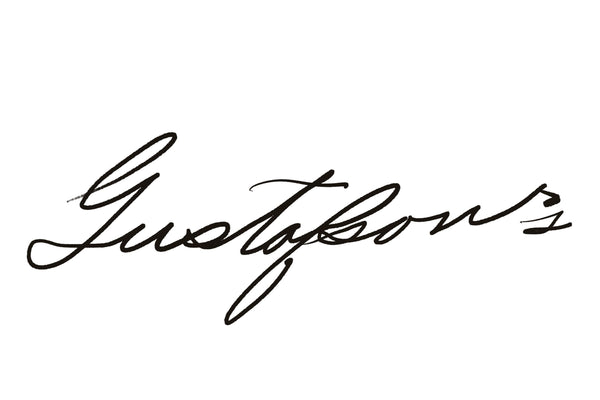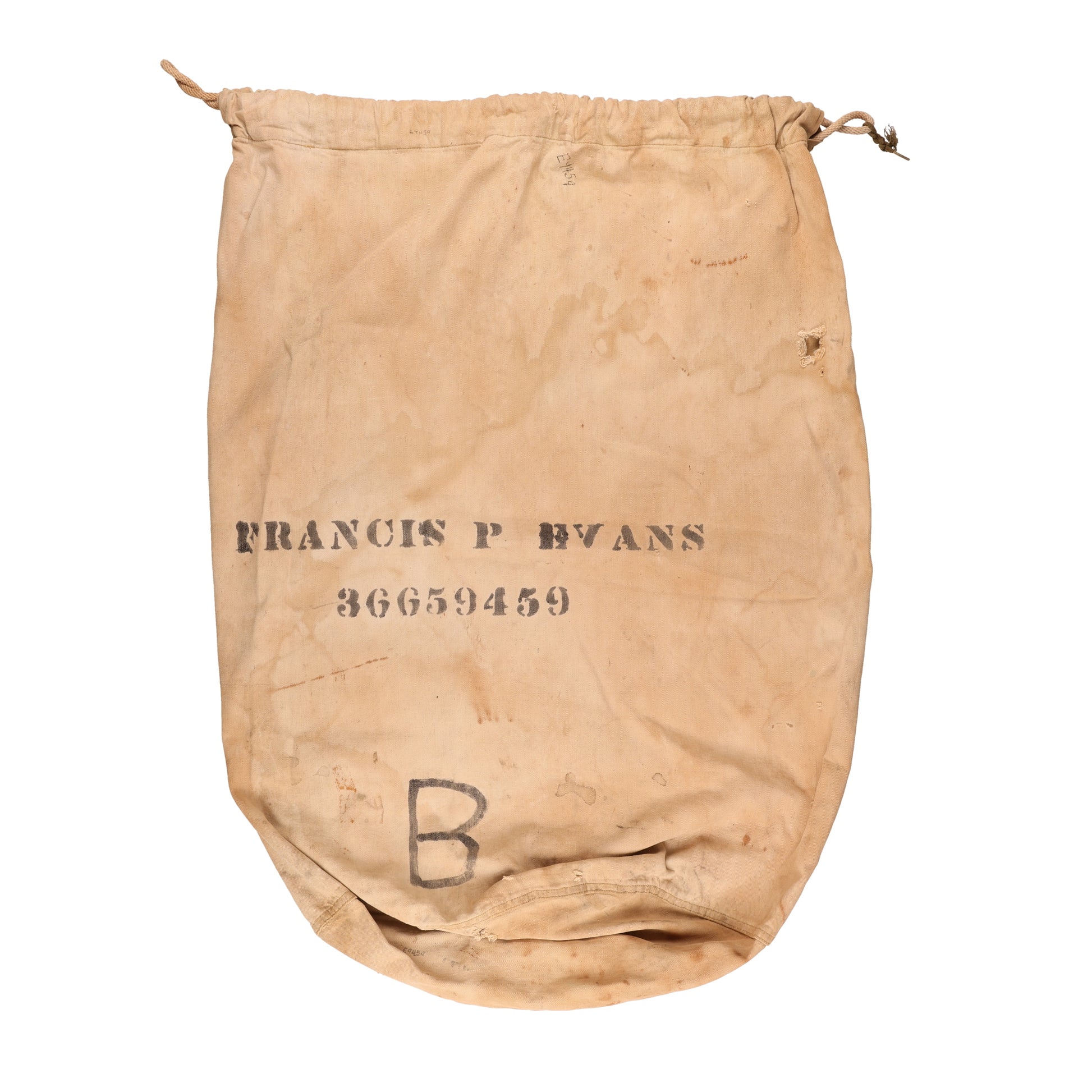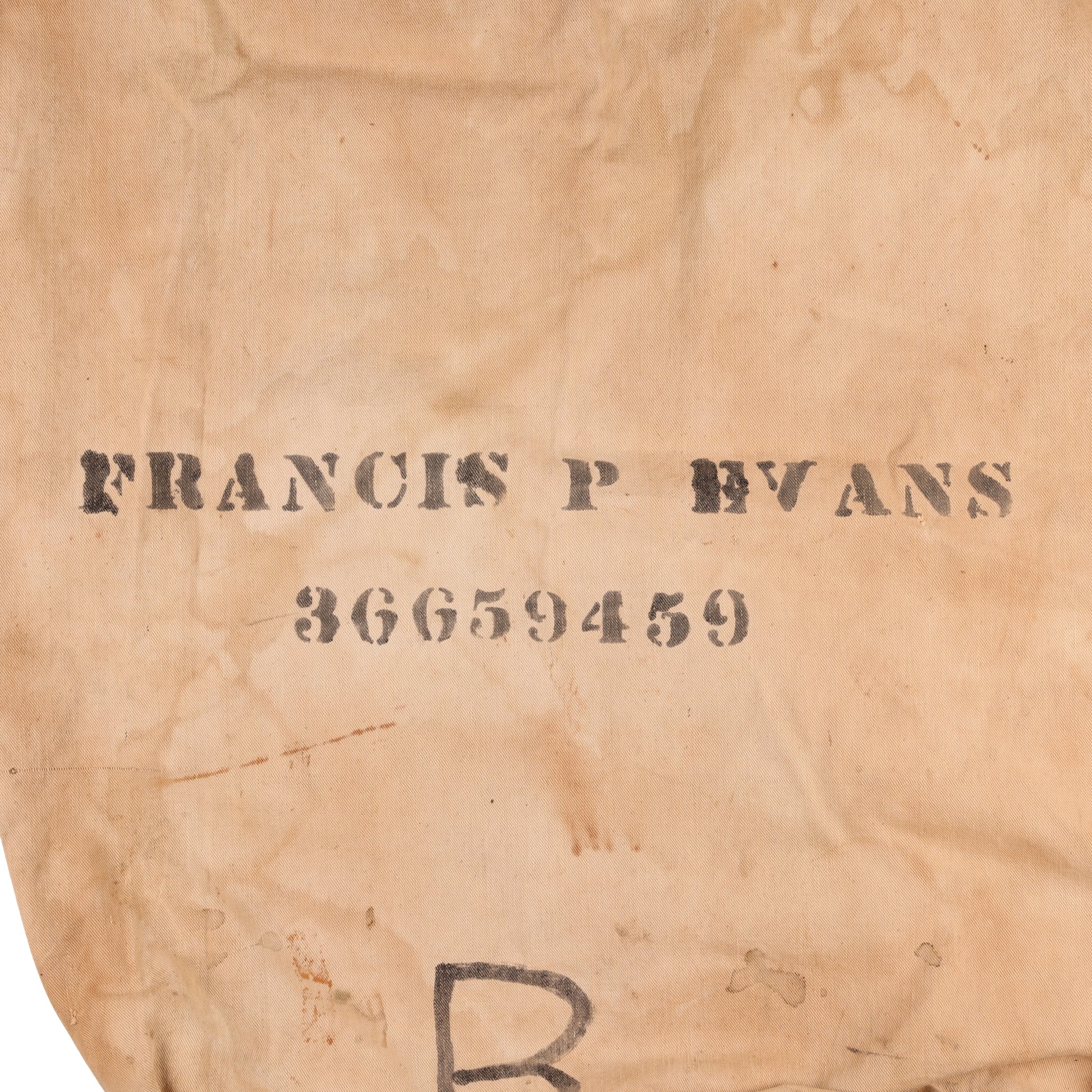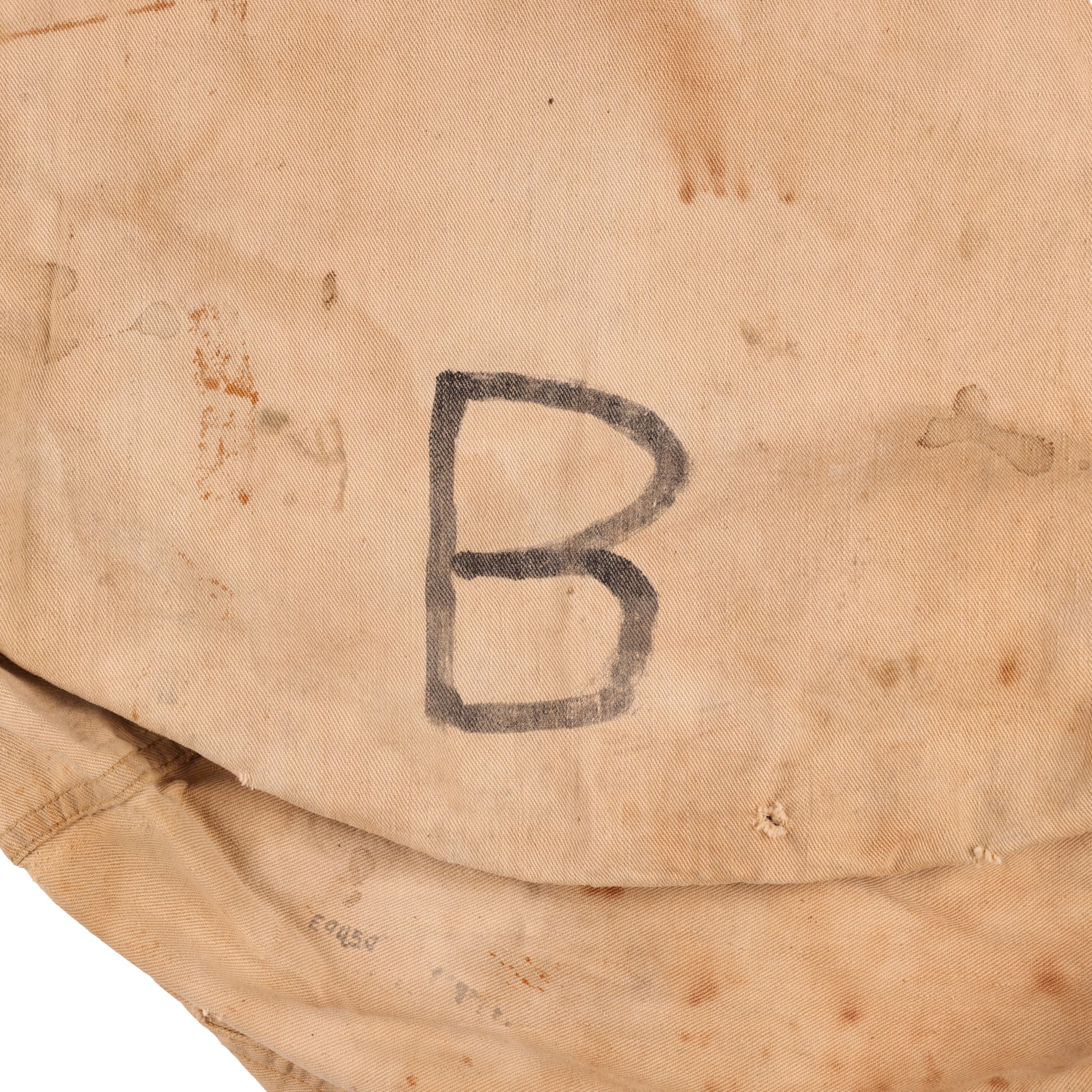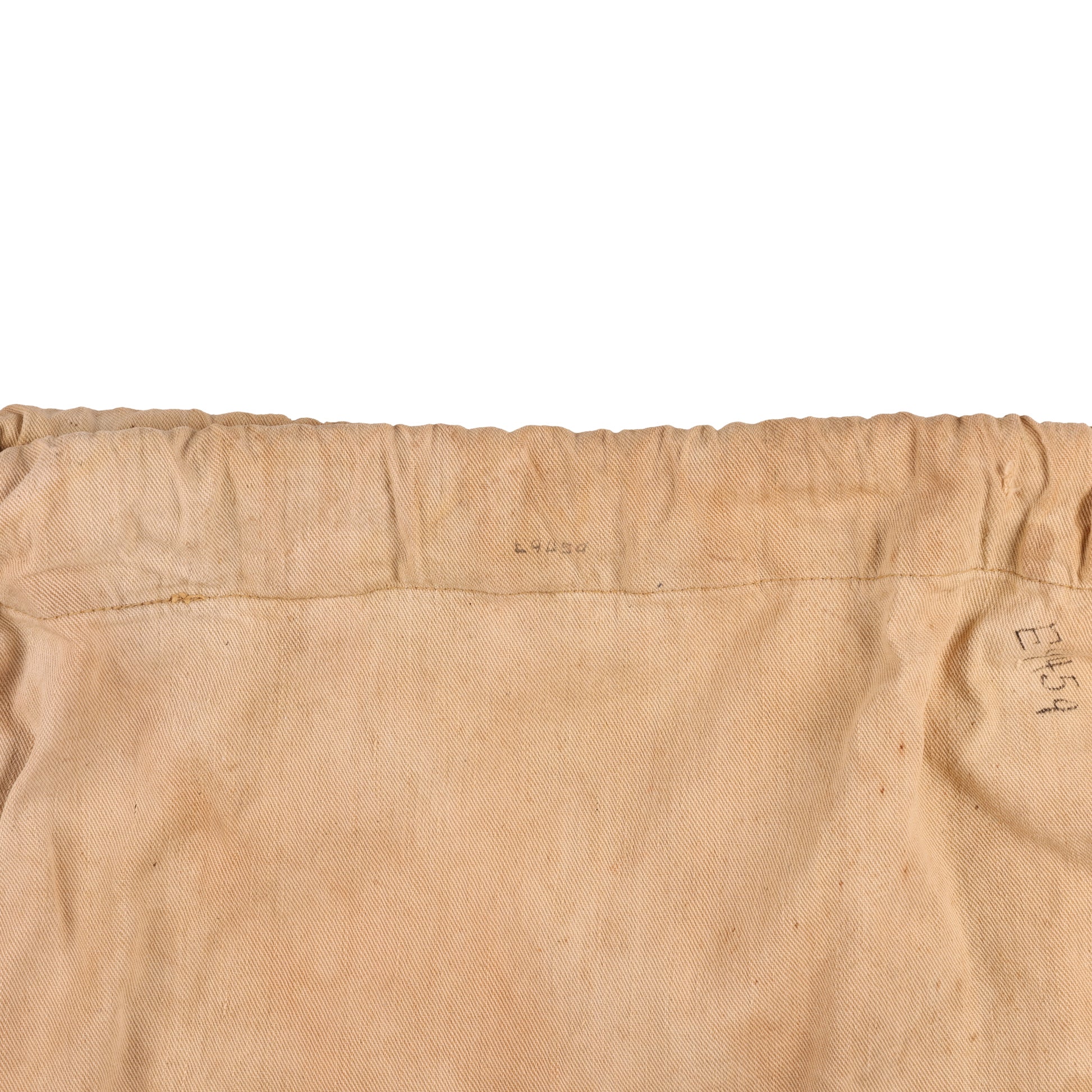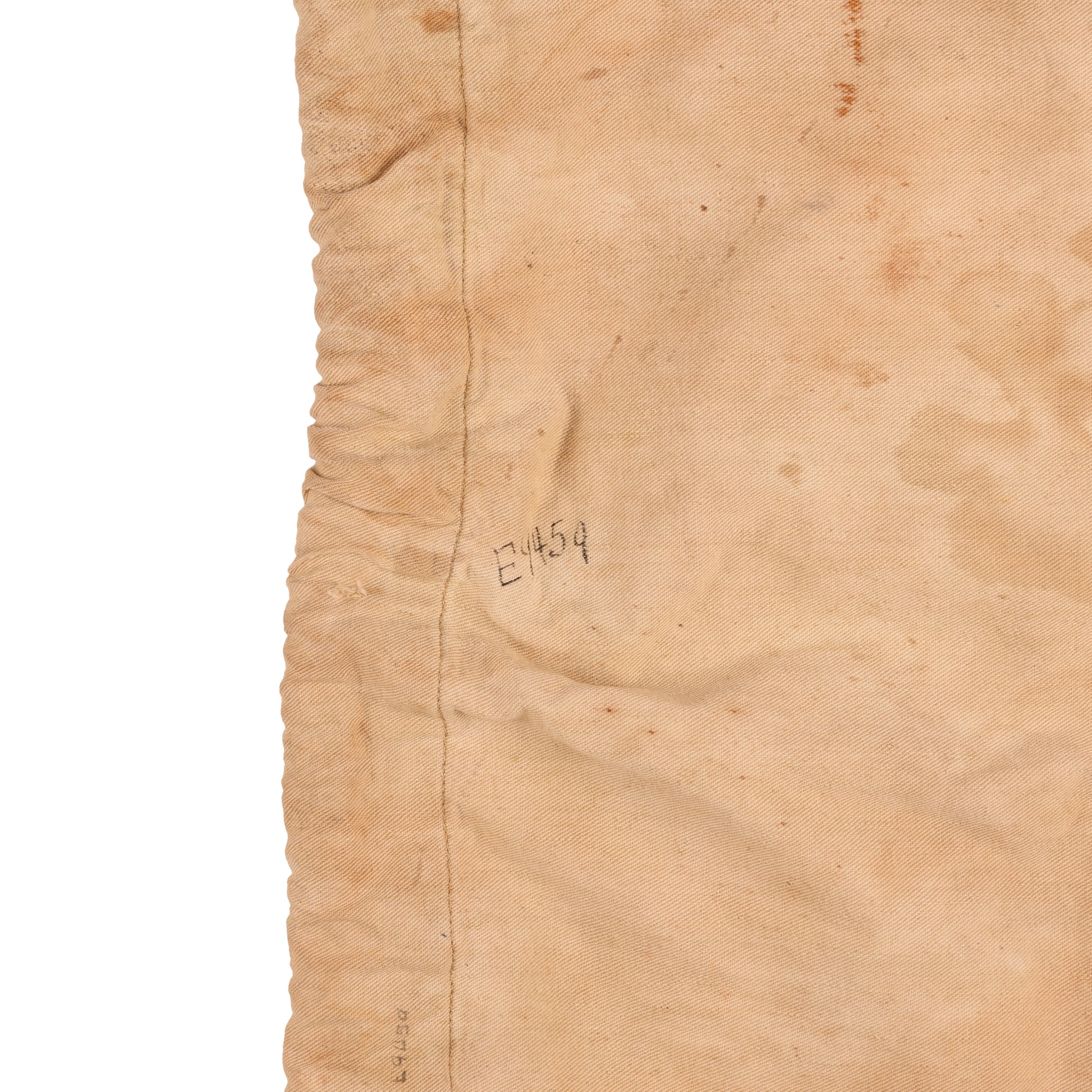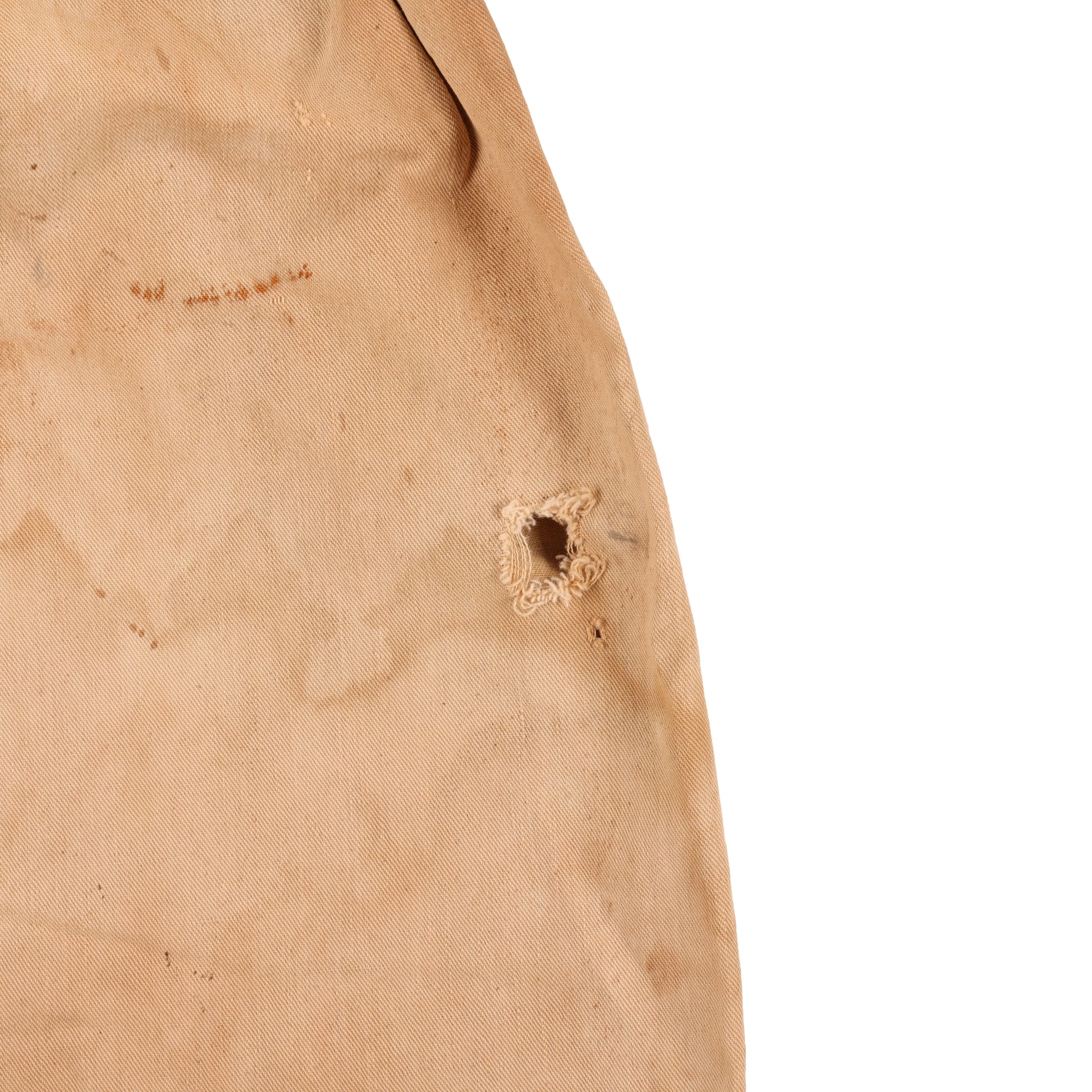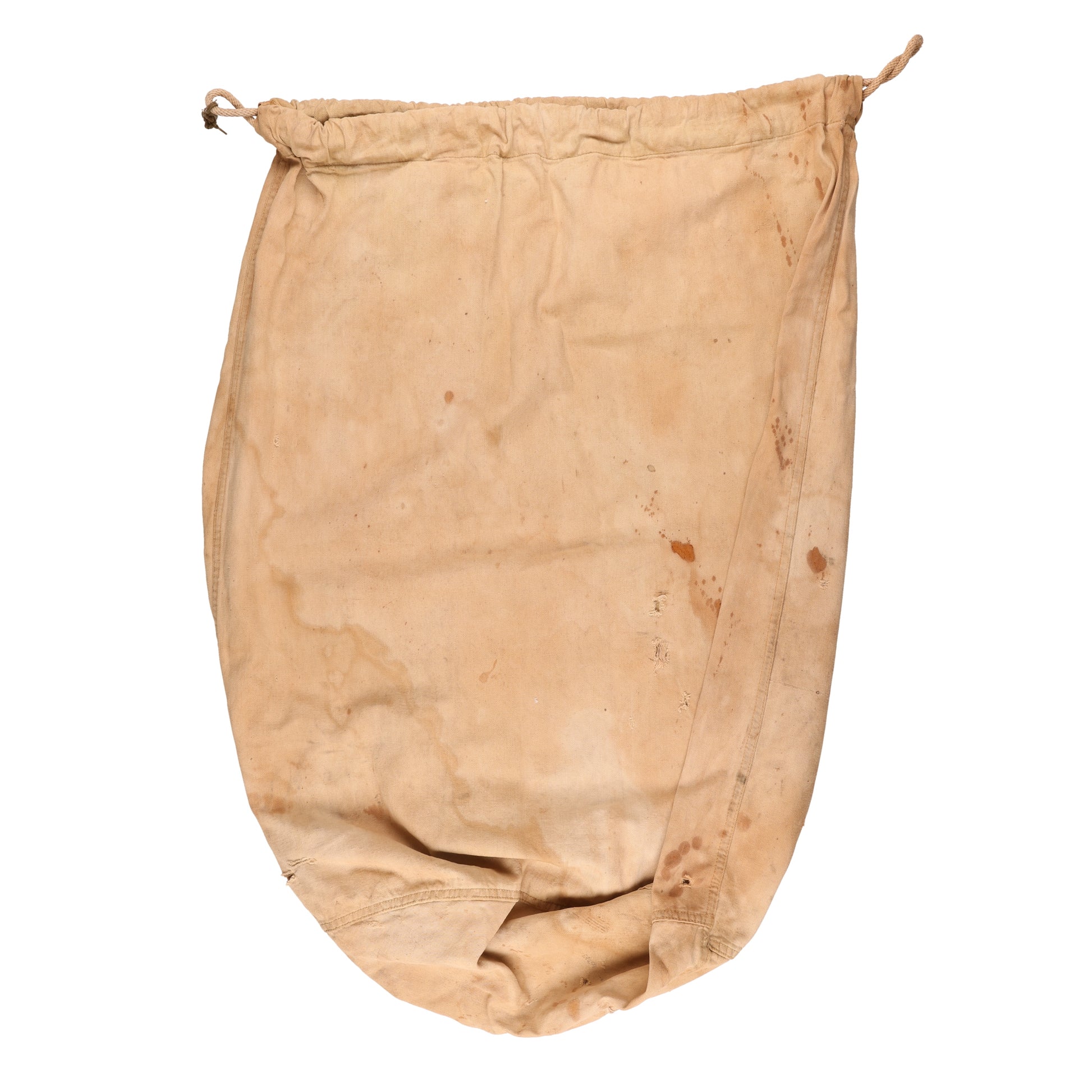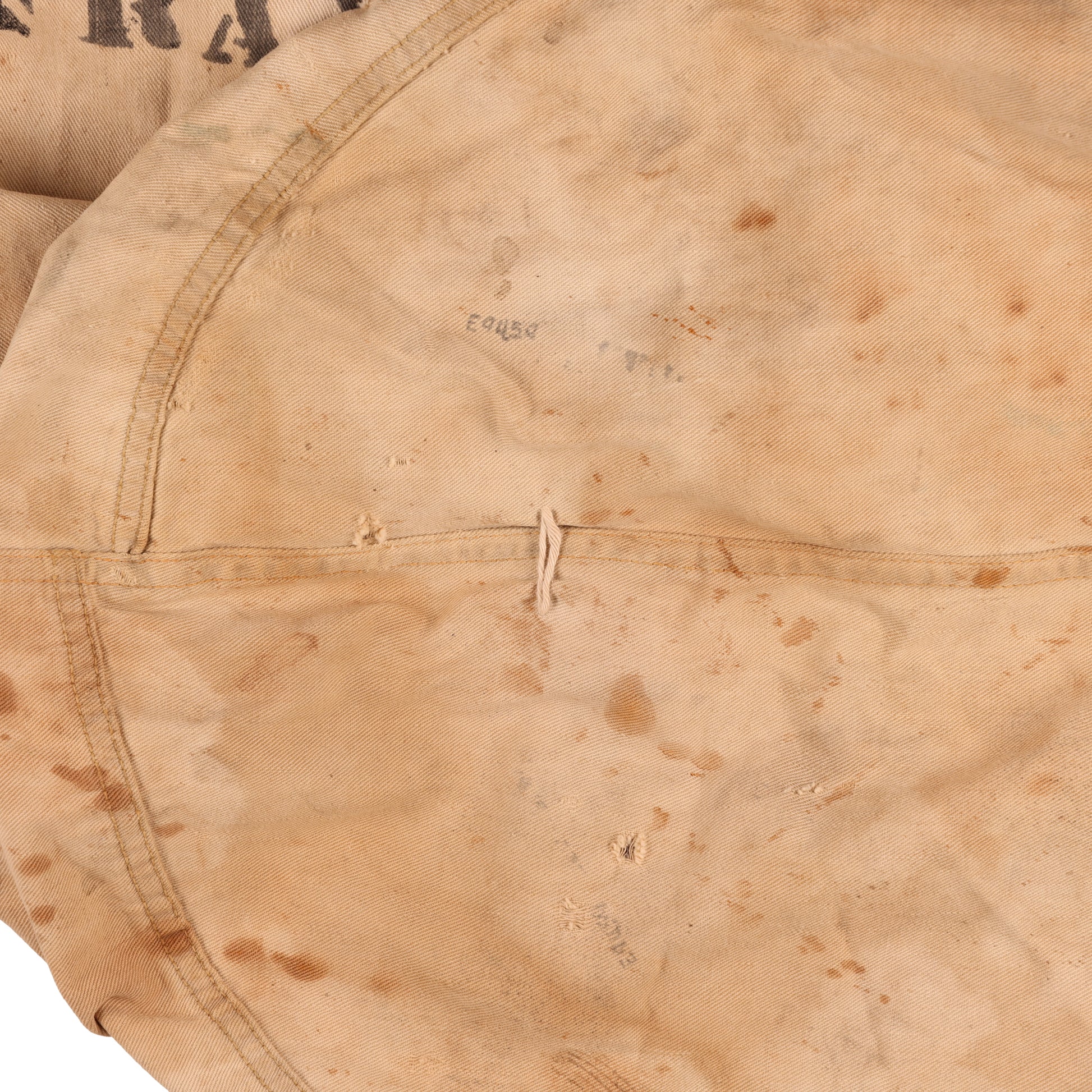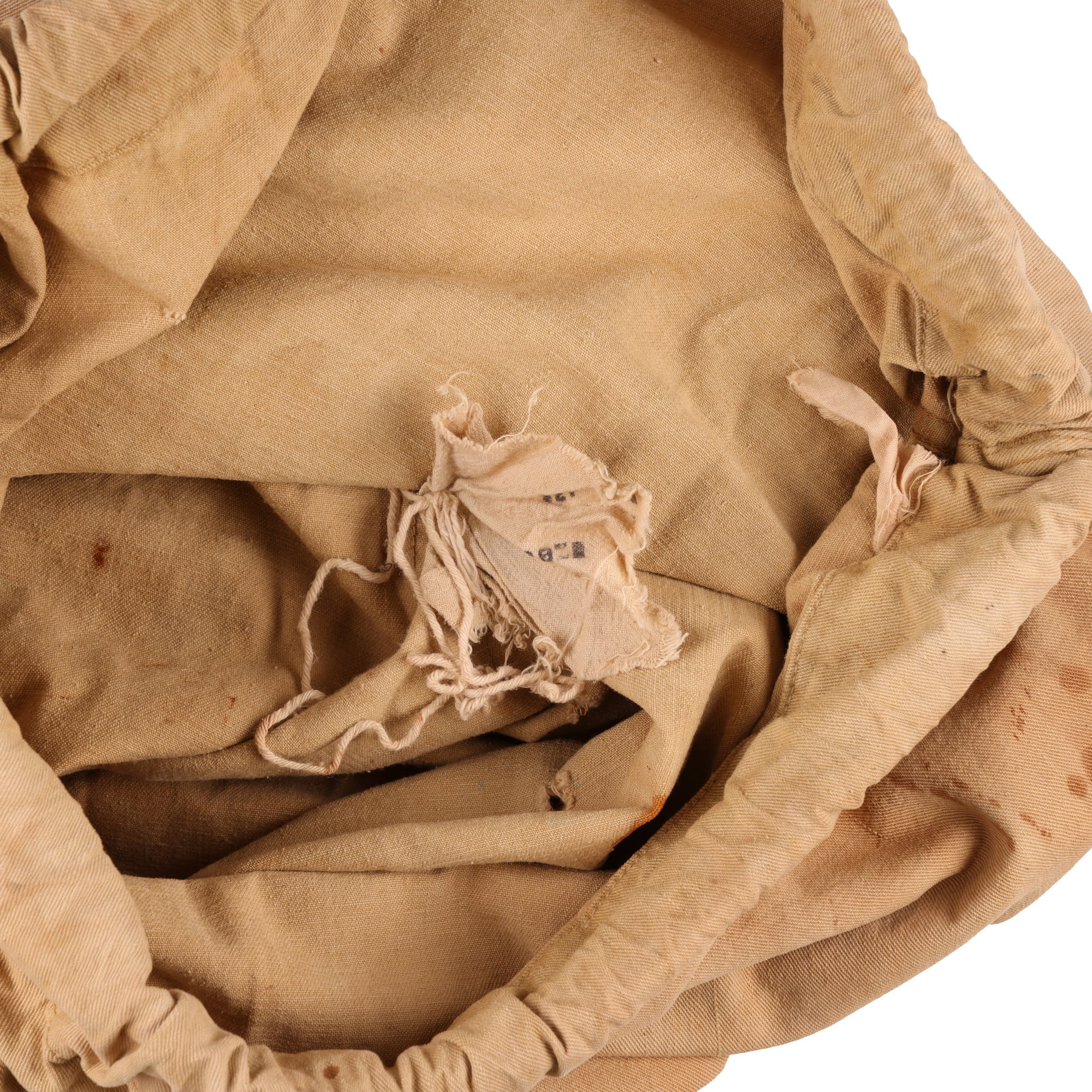WWII U.S. Army Barracks Bag Identified to Pfc. Francis P. Evans
WWII U.S. Army Barracks Bag Identified to Pfc. Francis P. Evans
Couldn't load pickup availability
International shipping available
International shipping available
Customs duties and taxes may apply.
Ships from: Texas, United States
Taxes not included
Taxes not included
VAT and other taxes are not reflected in the listed pricing.
Authenticity guaranteed
Authenticity guaranteed
All objects offered for sale by Gustafson's are guaranteed authentic. Read more
Description
This is an original WWII U.S. Army barracks bag. It is identified to Private First Class Francis P. Evans, 36659459. View the Veteran's Information section for more details regarding Pfc. Evans' life and military service. Each soldier was issued two barracks bags, marked "A" and "B", to store clean clothing and dirty laundry. It retains its original manufacturer's label which has unfortunately faded beyond legibility. Additionally, stitched to the interior's bottom is Evans' ID tag. This bag measures approximately 23.5 inches wide and 29 inches tall.
Provenance
Private Collection, Algonquin, Illinois
Condition Report
This bag is in good, used condition. It has faded with use and there are some holes throughout, but it still retains its original drawstring.
Veteran's Information
On July 12, 1973, the National Personnel Records Center in St. Louis, Missouri incurred a fire which destroyed 16-18 million Official Military Personnel Files; unfortunately, Francis P. Evans' files appear to have been affected. That said, we were able to discover Pfc. Evans' "Morning Reports" and determine that he served in the 1677th Ordnance Supply and Maintenance Company, 329th Service Group. Evans had some misfortune during his service and was hospitalized on two separate occasions: first, with a hemorrhoids diagnosis in February 1944, followed by dysentery in November 1944. Made available to the new owner below are Evans' "Morning Reports" from the National Archives.
Share
